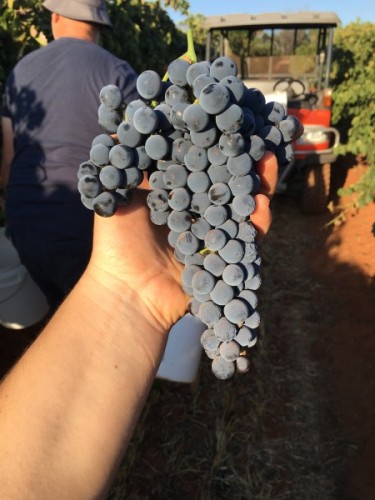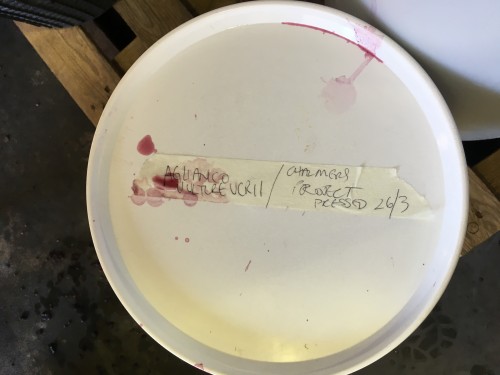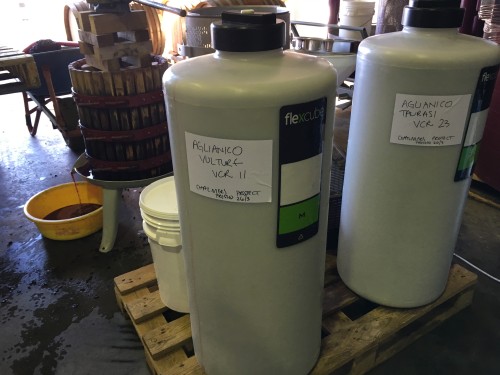I find myself talking about clones a lot when I’m talking wine. Wanky. But it makes sense in a very basic way for me. I grew up in vineyards – actually a nursery to be exact, and vineyards. Wine is not in my blood, sap is. Propagating a grape vine happens one of a few ways. You either grow it from seed, or you take a cutting. You can even grow it from a microscopic slither (tissue culture) – if you want to get really fancy you can graft or bud a vine to change it into something else. But the best way to create a new vine with the same characteristics of the old vine is to do so by taking a cutting of the original plant, propagating it and therefore creating an exact replica. By growing a seedling or creating a tissue culture, you are never assured of the exact same genetic characteristics as the mother. But with a cutting you are – this process is cloning. Therefore we have created a kind of global collection of grapevine clones, it’s not really regulated or very organised, but from country to country these catalogues of clones do exist.
Propagating a grape vine happens one of a few ways. You either grow it from seed, or you take a cutting. You can even grow it from a microscopic slither (tissue culture) – if you want to get really fancy you can graft or bud a vine to change it into something else. But the best way to create a new vine with the same characteristics of the old vine is to do so by taking a cutting of the original plant, propagating it and therefore creating an exact replica. By growing a seedling or creating a tissue culture, you are never assured of the exact same genetic characteristics as the mother. But with a cutting you are – this process is cloning. Therefore we have created a kind of global collection of grapevine clones, it’s not really regulated or very organised, but from country to country these catalogues of clones do exist.

Grape vines are categorised into varieties, recognisable by distinct DNA from each other. Branches of the Vitis Vinifera family. But clones are a bit more mysterious. From generations of anecdotal evidence, and some scientific viticultural and sensory research, they are certainly recognisable from one another. But exactly the genetic differences are hard to pin down.

I’m not a scientist. I’m not even a qualified viticulturist or winemaker. But I can tell you that the inter-clonal individualities within grape varieties are massive distinguishing features in vine and fruit characteristics. Until recently I couldn’t tell you so much about the oenological effect. But in 2016 in the Chalmers Merbein winery I got to undertake a little pet project I’d been gunning for for some time. I love Aglianico. Always have. And despite the fact that we have had four different clones in the vineyard for more than 15 years we have always made wine from just one clone based on the perceived superiority of the grapes in flavour and maturity analysis. But what of the other three clones?
So in 2016 Bart, Tennille and I, along with Sandro Mosele who was up visiting us on the day, harvested a couple hundred kilos each of the four different clones from our nursery source block in Merbein on 7th March – which, when you consider it was one of the earliest vintages ever and harvest began in mid January, is very late in the season. Two clones were originating from the Taurasi region in Campania (VCR23 and MAT3) and two originating from Vulture, Basilicata (VCR11 and MAT2). My humble opinion at that point, based on the wines I’d seen to date in Australia and Italy, was that Taurasi wines were more red fruited while Vulture were more blue. Nothing scientific. Just a vibe. But who knows what the differences would be when they were grown side by side, in controlled conditions where they were all treated exactly the same in the growing season, and in the winery. The four clones – MAT 2 and VCR 11 from Vulture and MAT 3 and VCR23 from Taurasi, were all harvested on the same day, by hand, destemmed and fermented using wild yeasts for about 22 days before pressing. Malo was natural and went through in less than a month. Wines were then sulphured and let to rest in 100 litre vessels for a few months and bottled on 5th September 2016.

The results? In our opinion the 2 VCR clones are the superior clones. More complex and complete wines. The Vivai Cooperativi Rauscedo process for selecting and registering a clone is extremely rigorous and includes over a decade of testing in the field and winery. The evidence of this became more clear after our trials in this project. The Matura clones were interesting, more rustic, less complex. But the Vulture and Taurasi origins of the clones were evident. The fact that these Aglianco vines had evolved in their distinct regions was clear – they were different, but the clones from the same regions had detectable similarities. Vulture in general are more perfumed and pretty, Taurasi more savoury and structured.
What an interesting project! You’ll have to taste for yourself to see the results. But I feel like this little exercise has justified my reference to clones when talking about wines. They do make a significant difference. They really do play an important part in defining the wine that results. Does it matter to the consumer in the end? Not sure. But I find the whole thing fascinating.
Three cheers for Aglianico!



